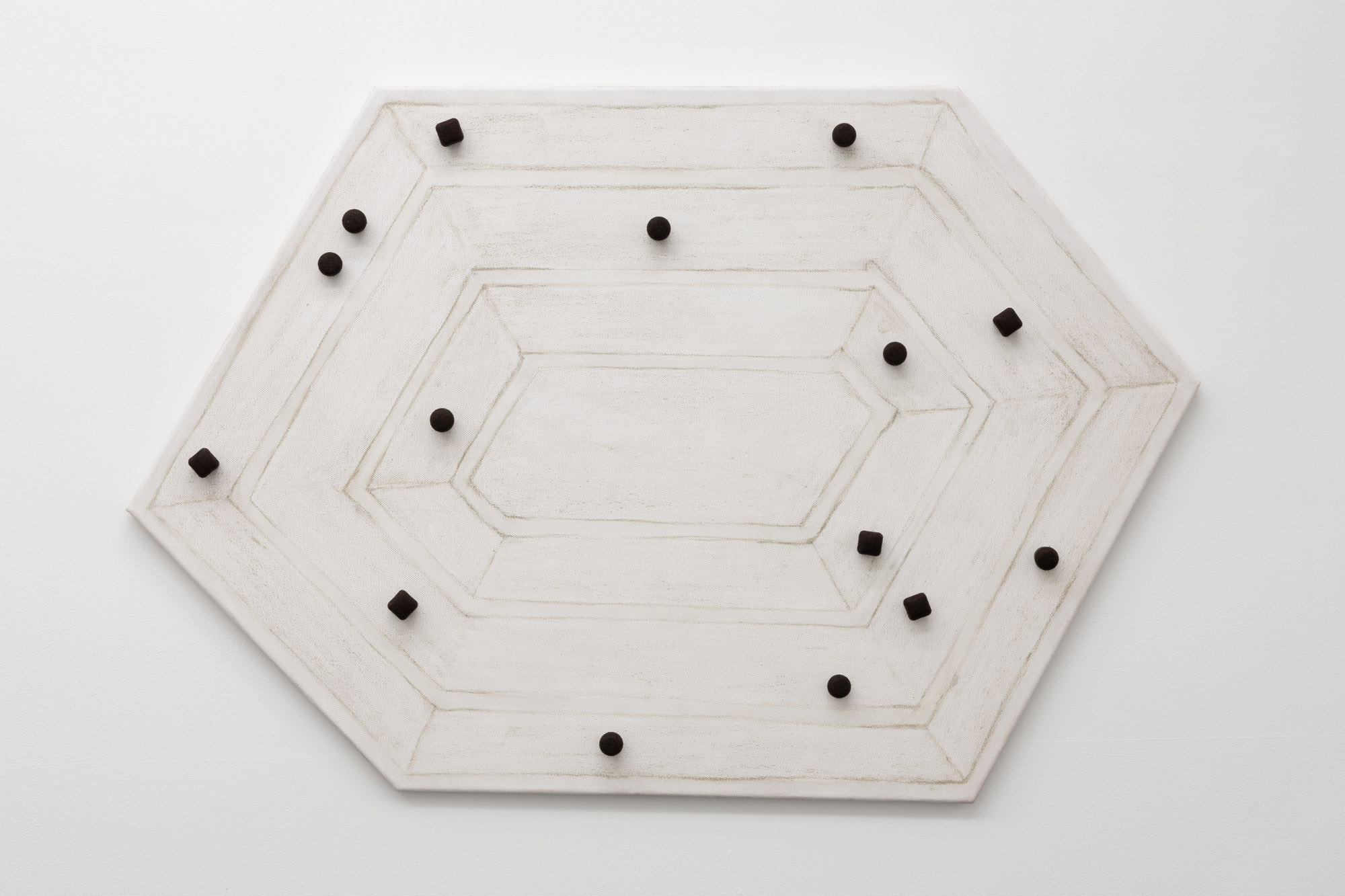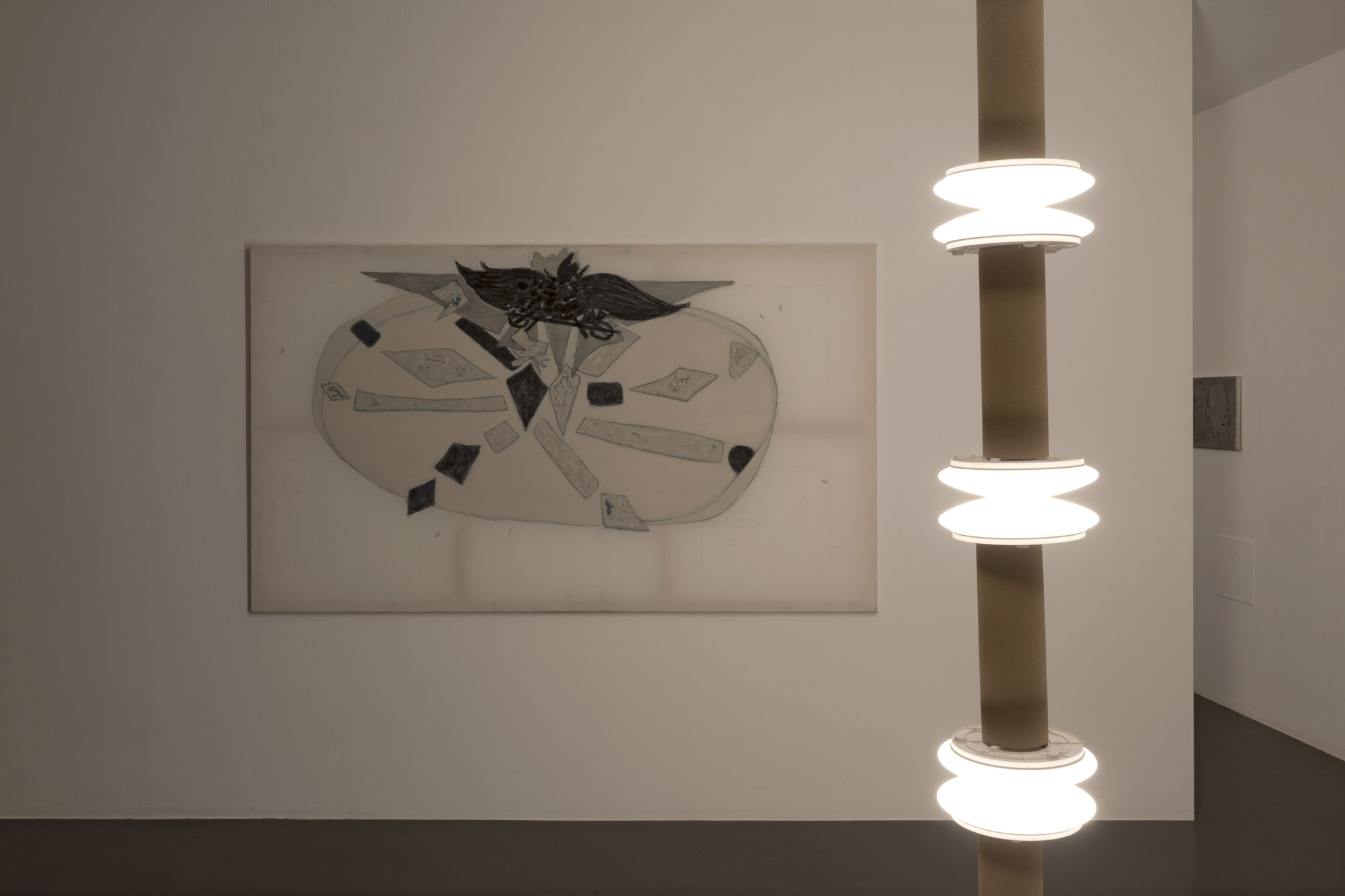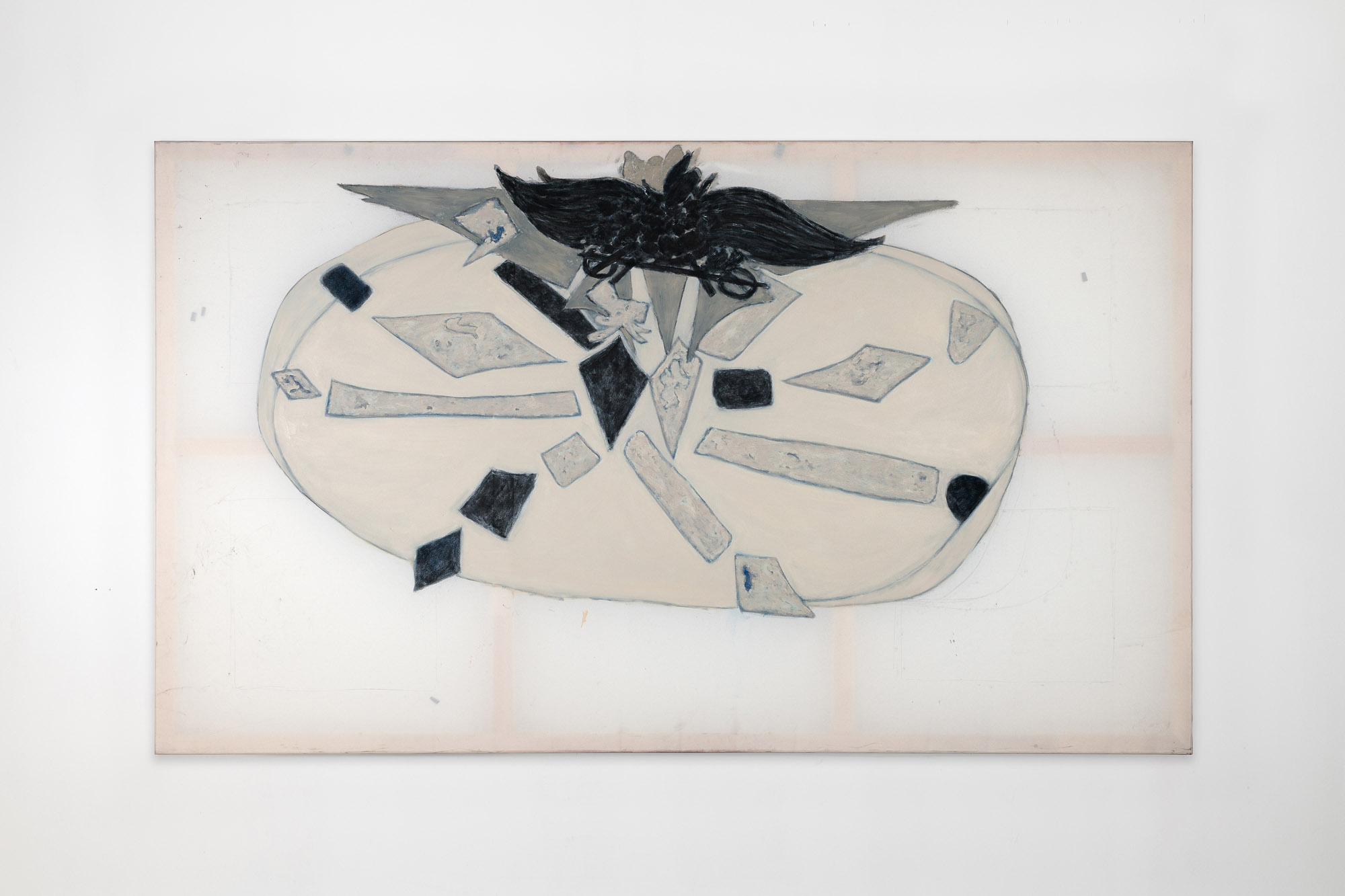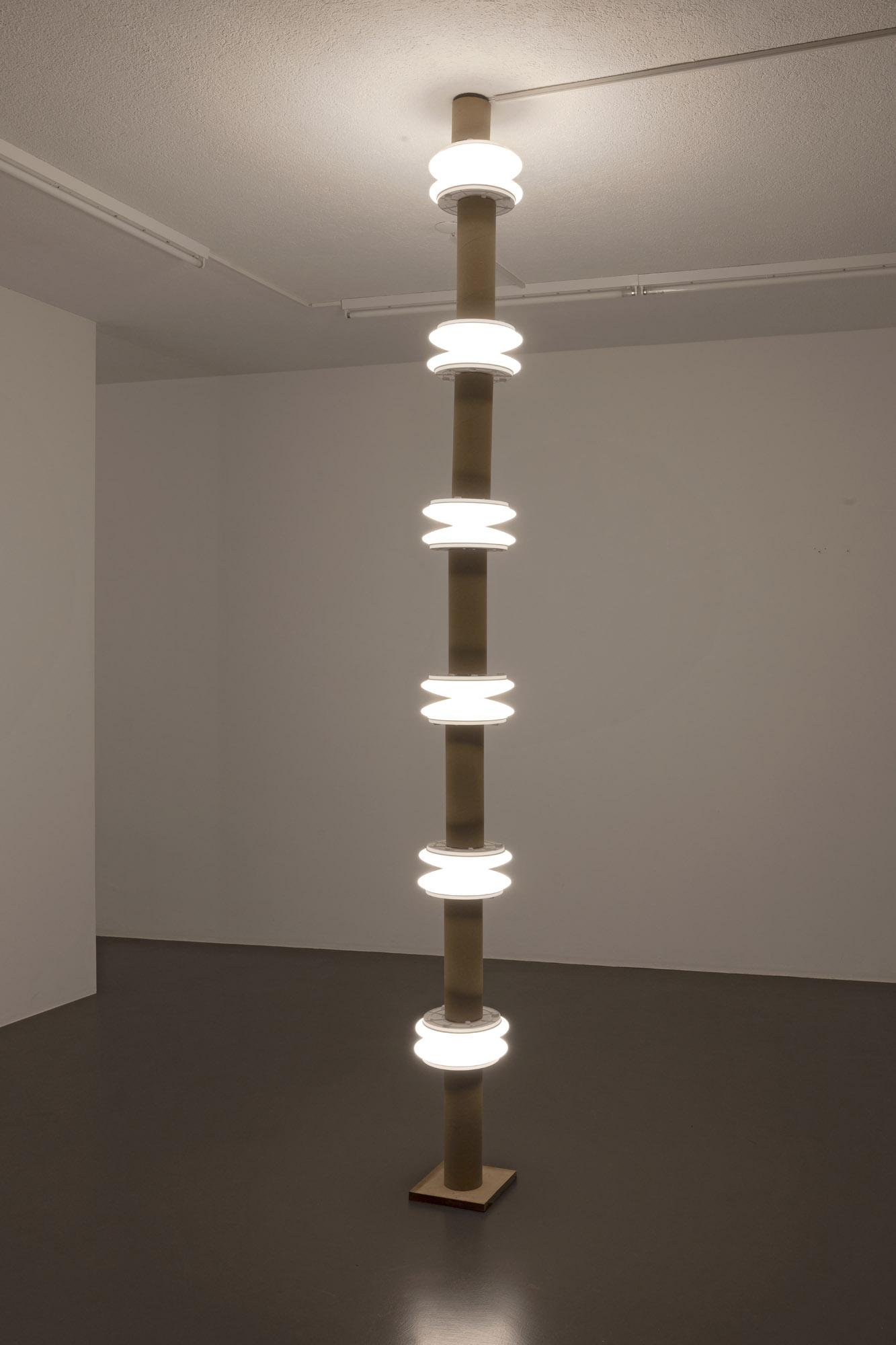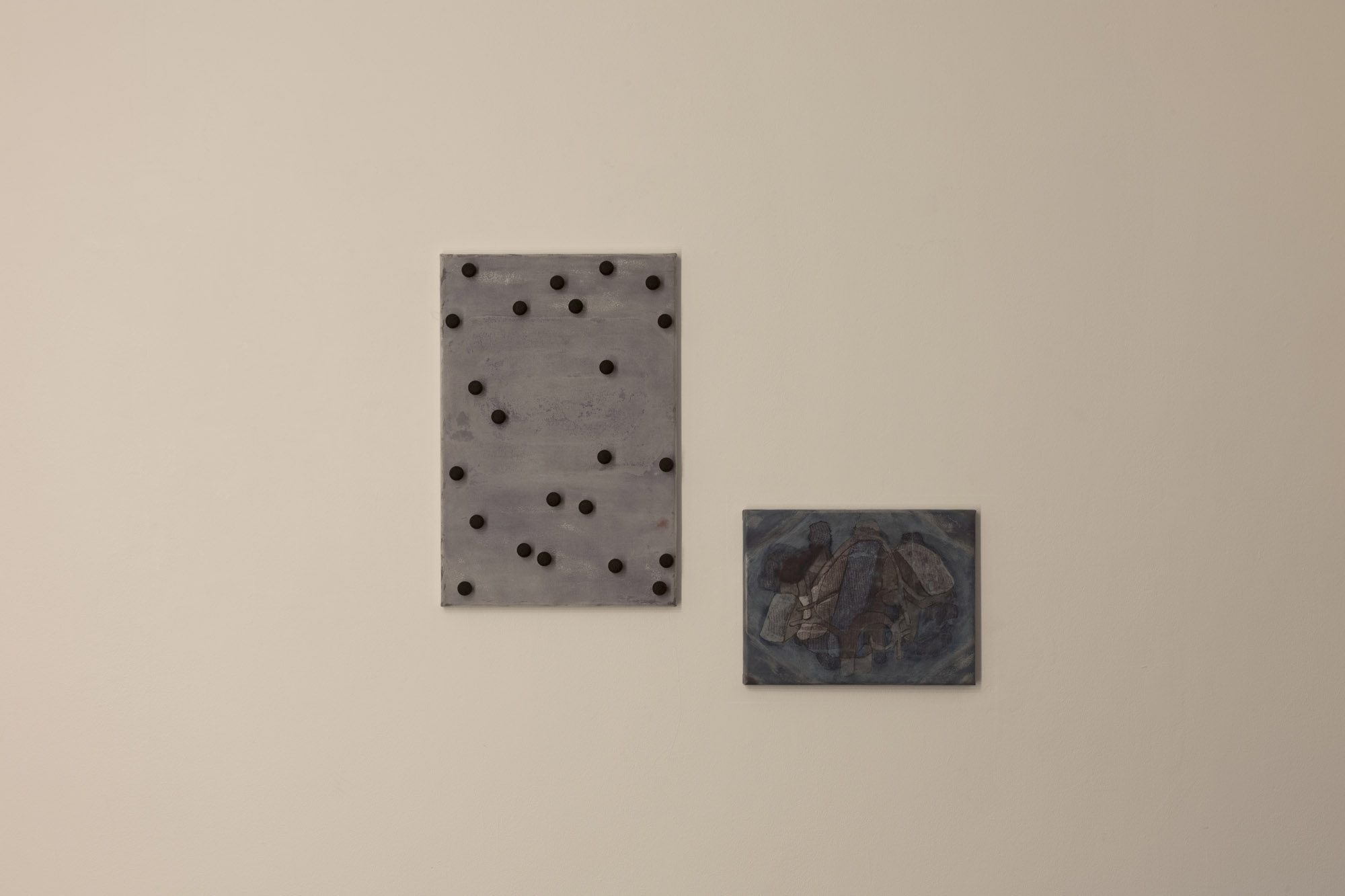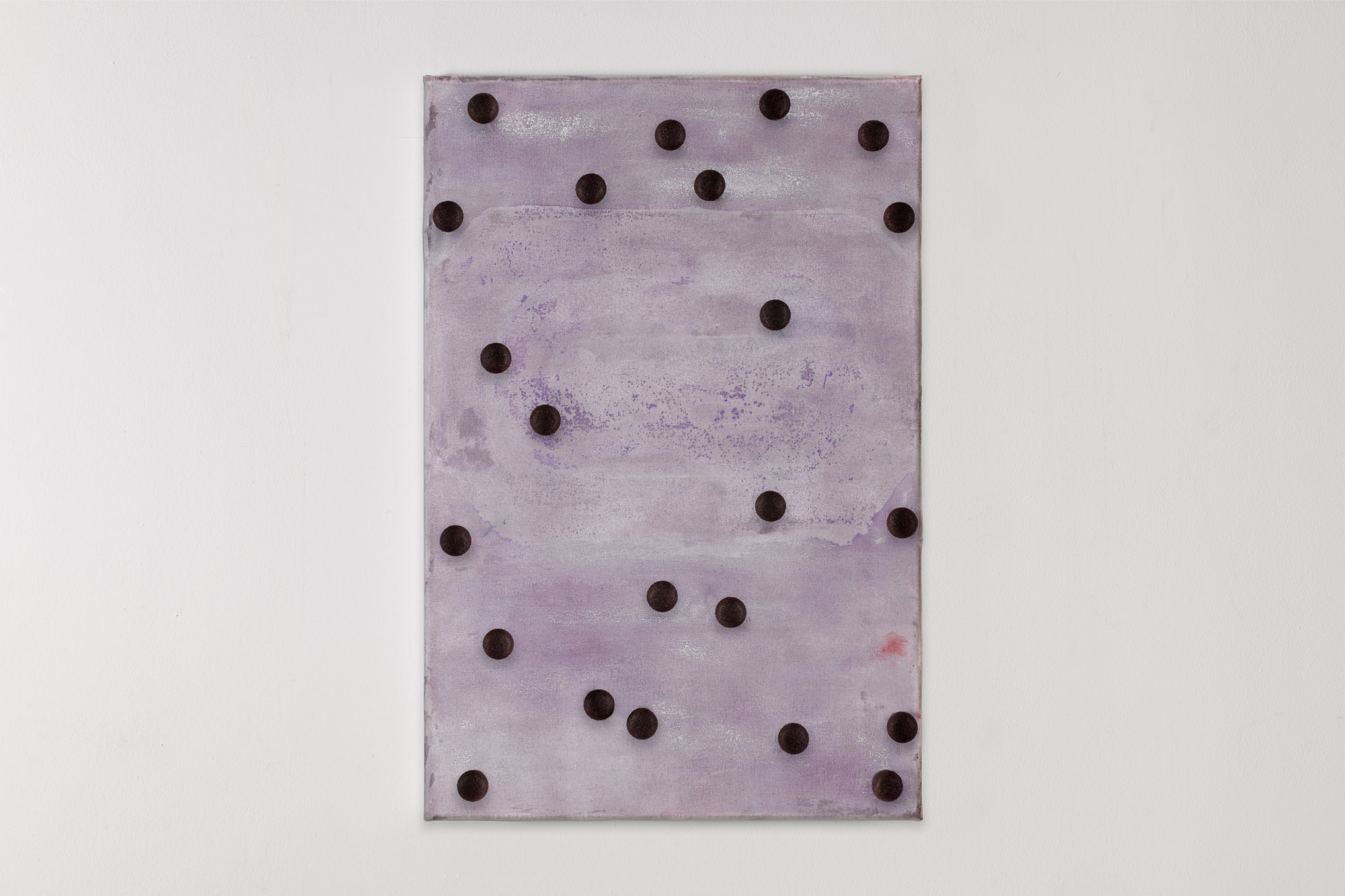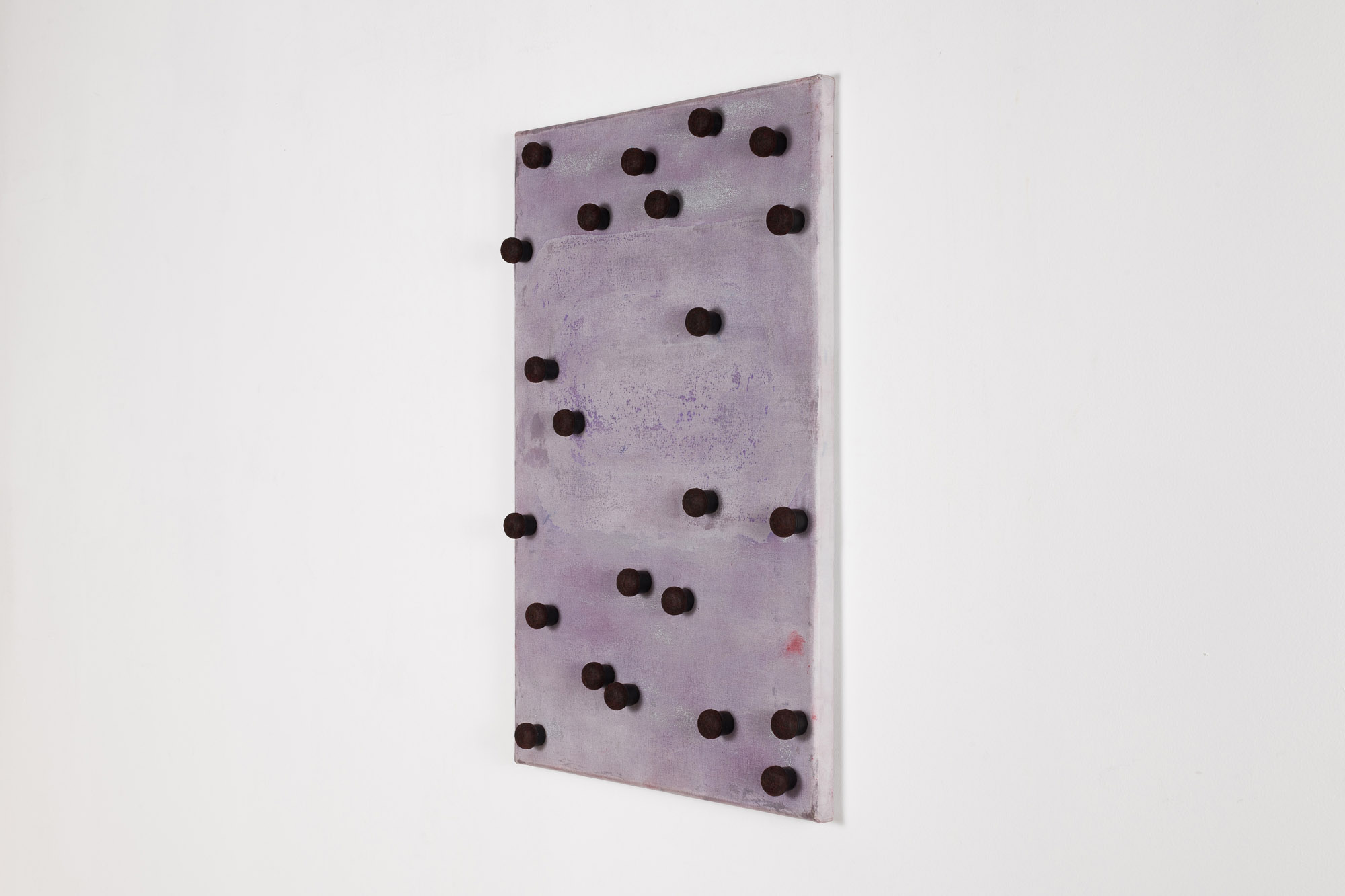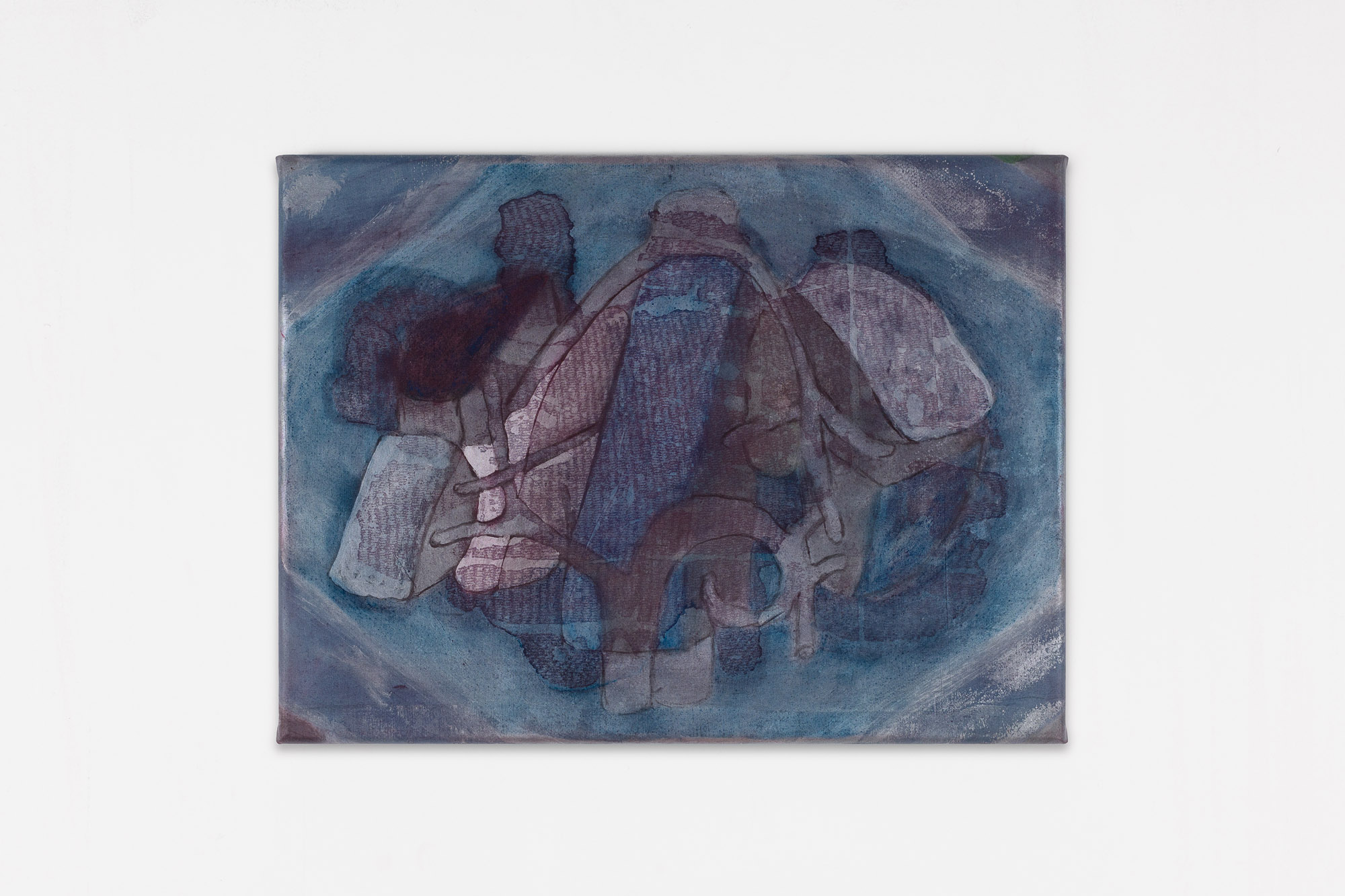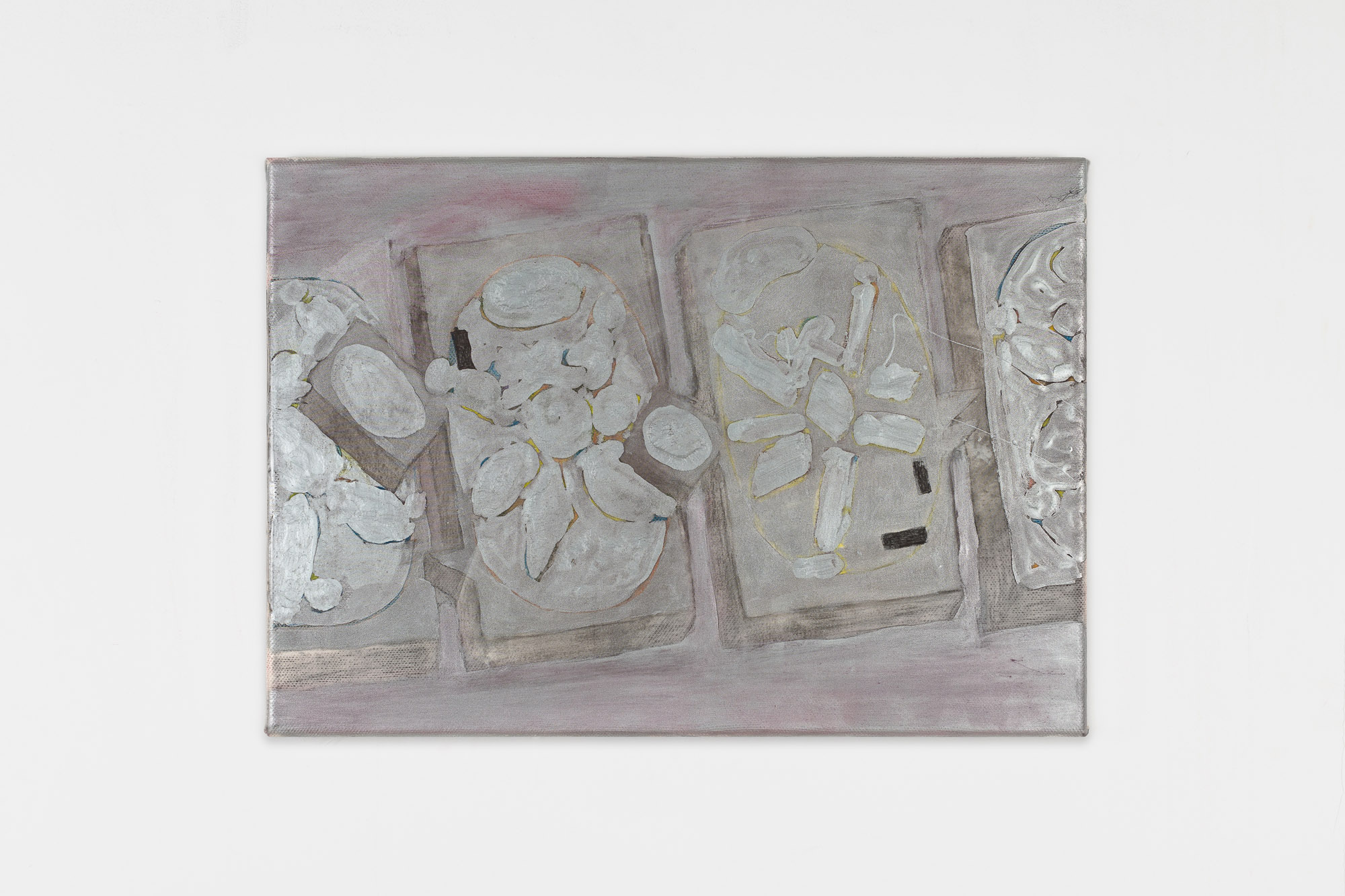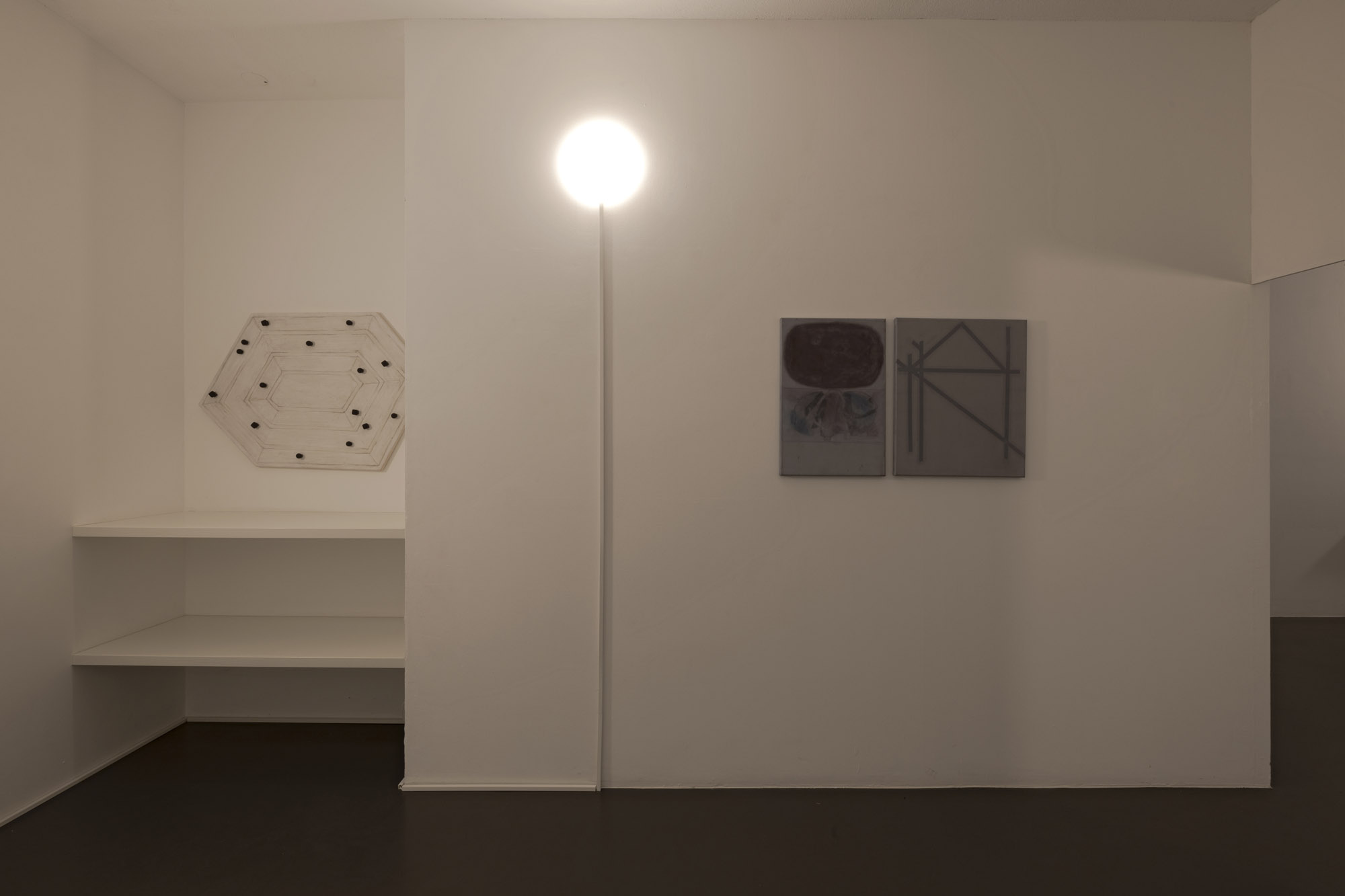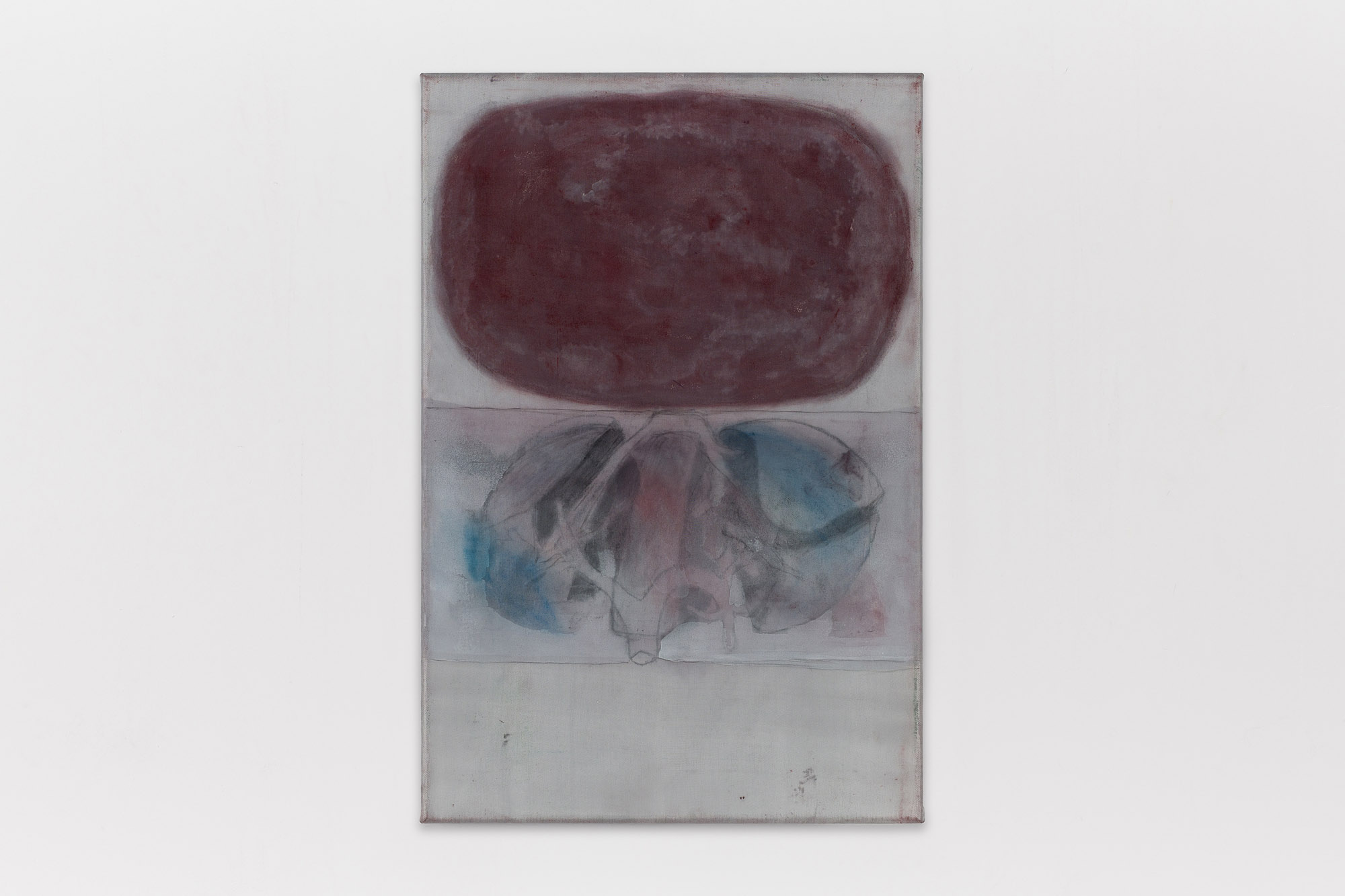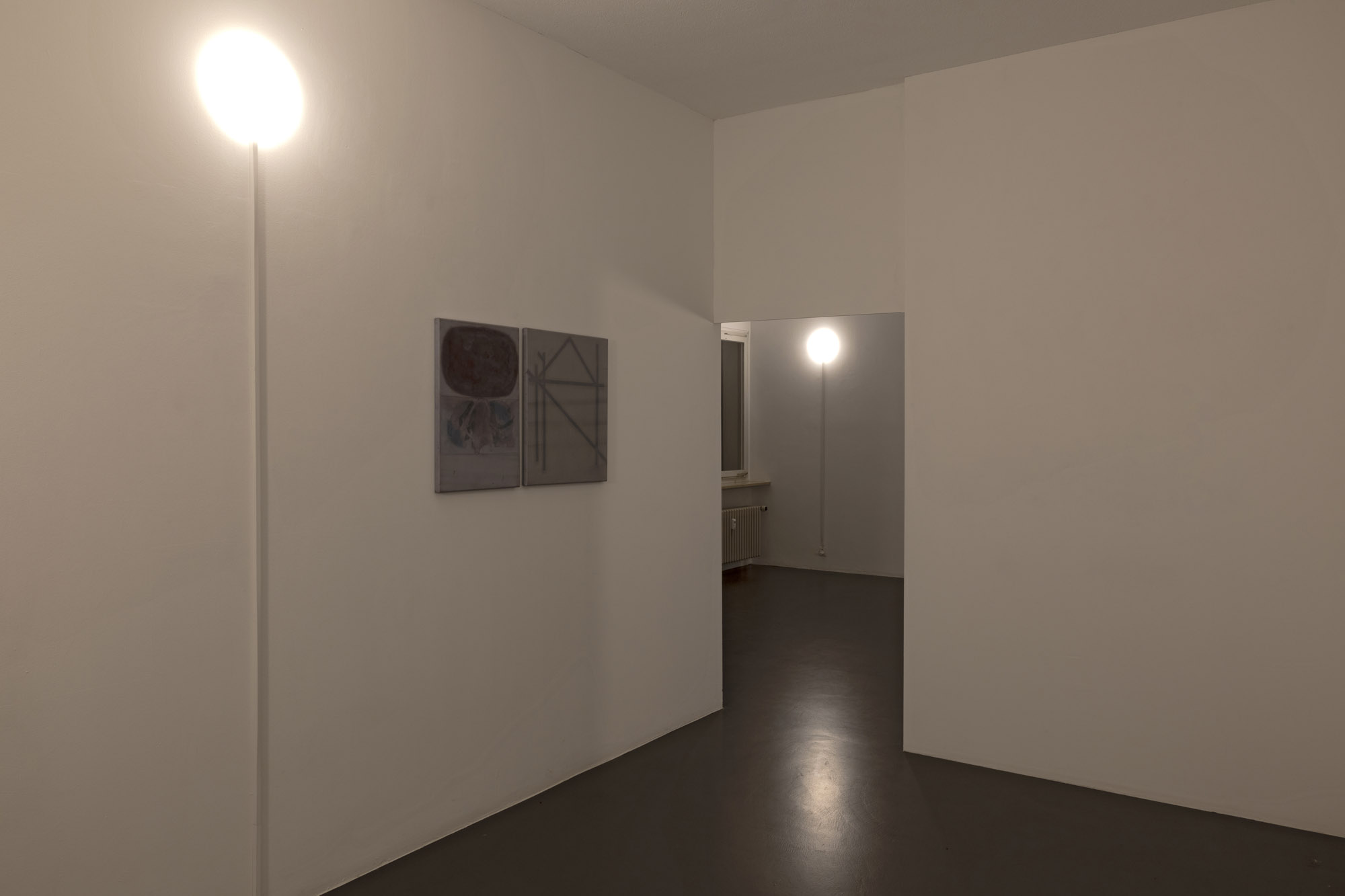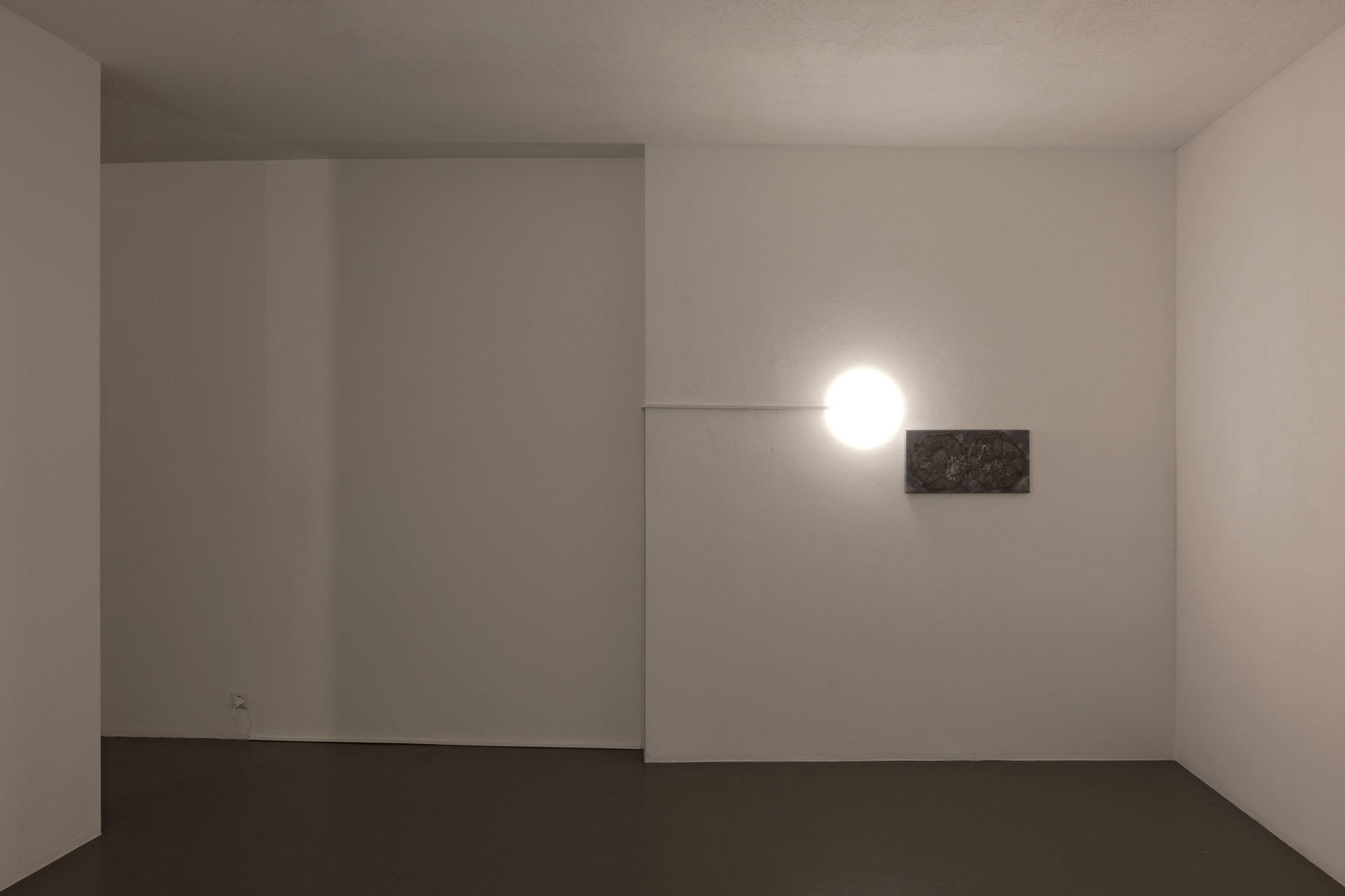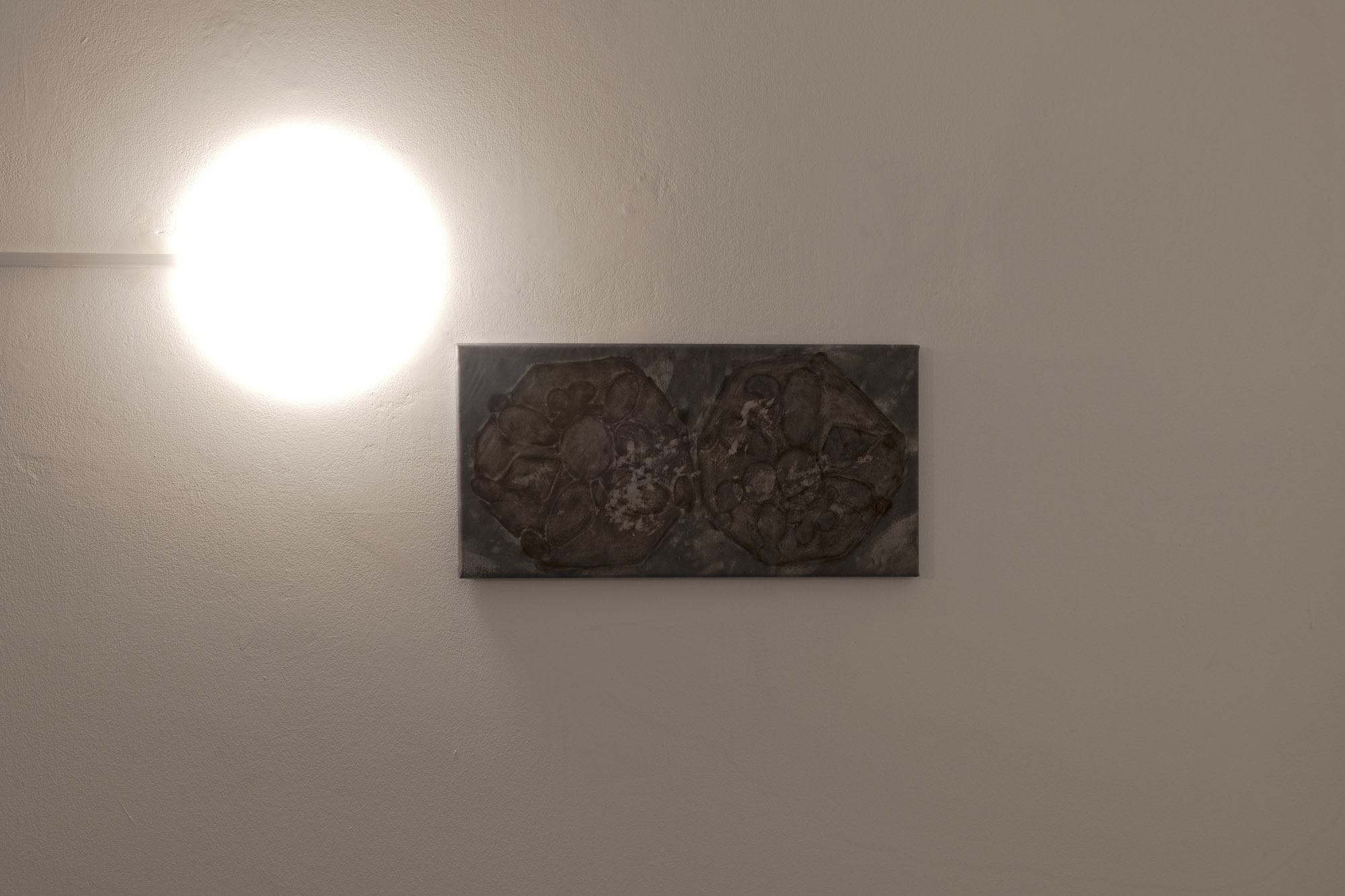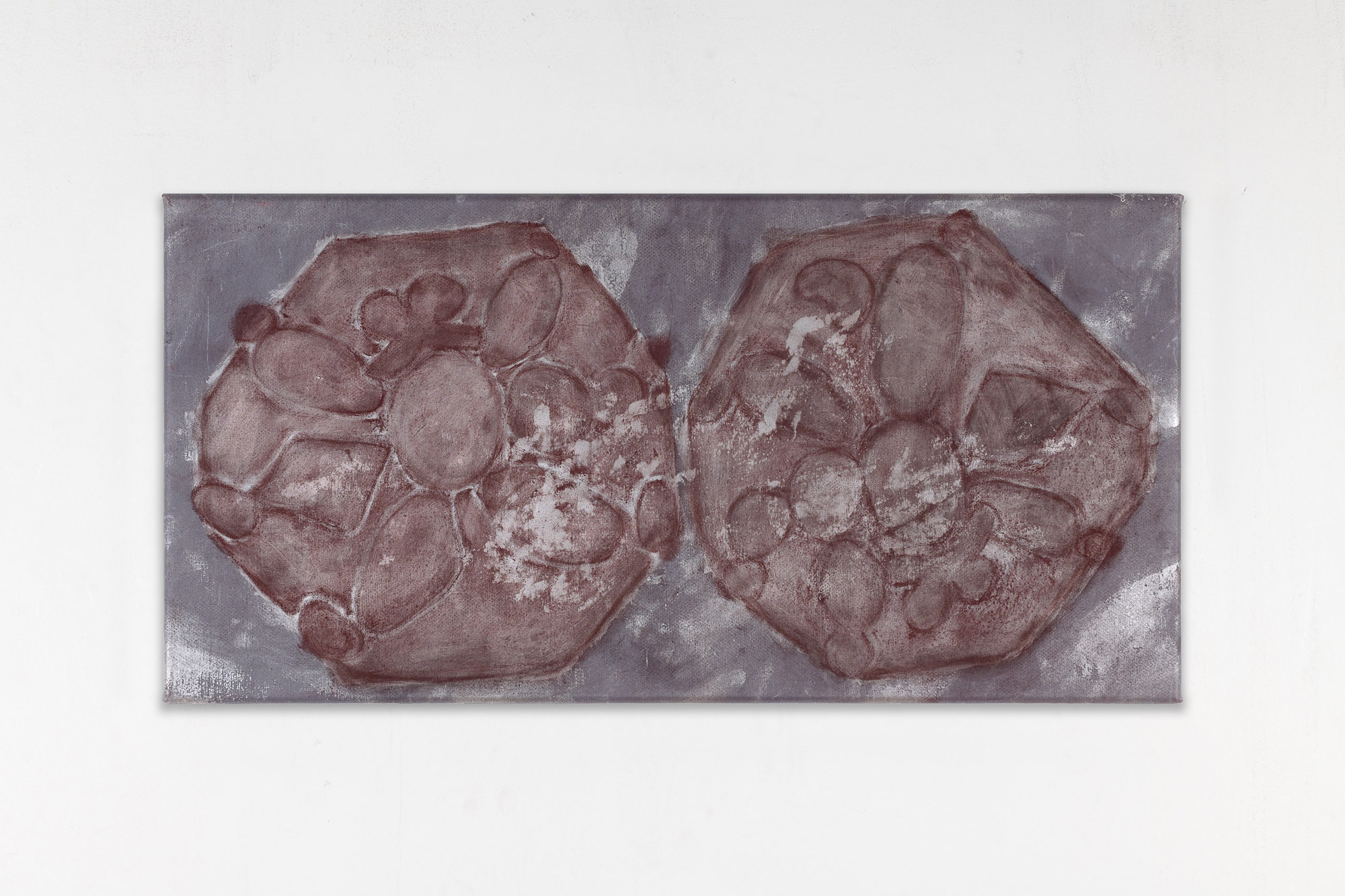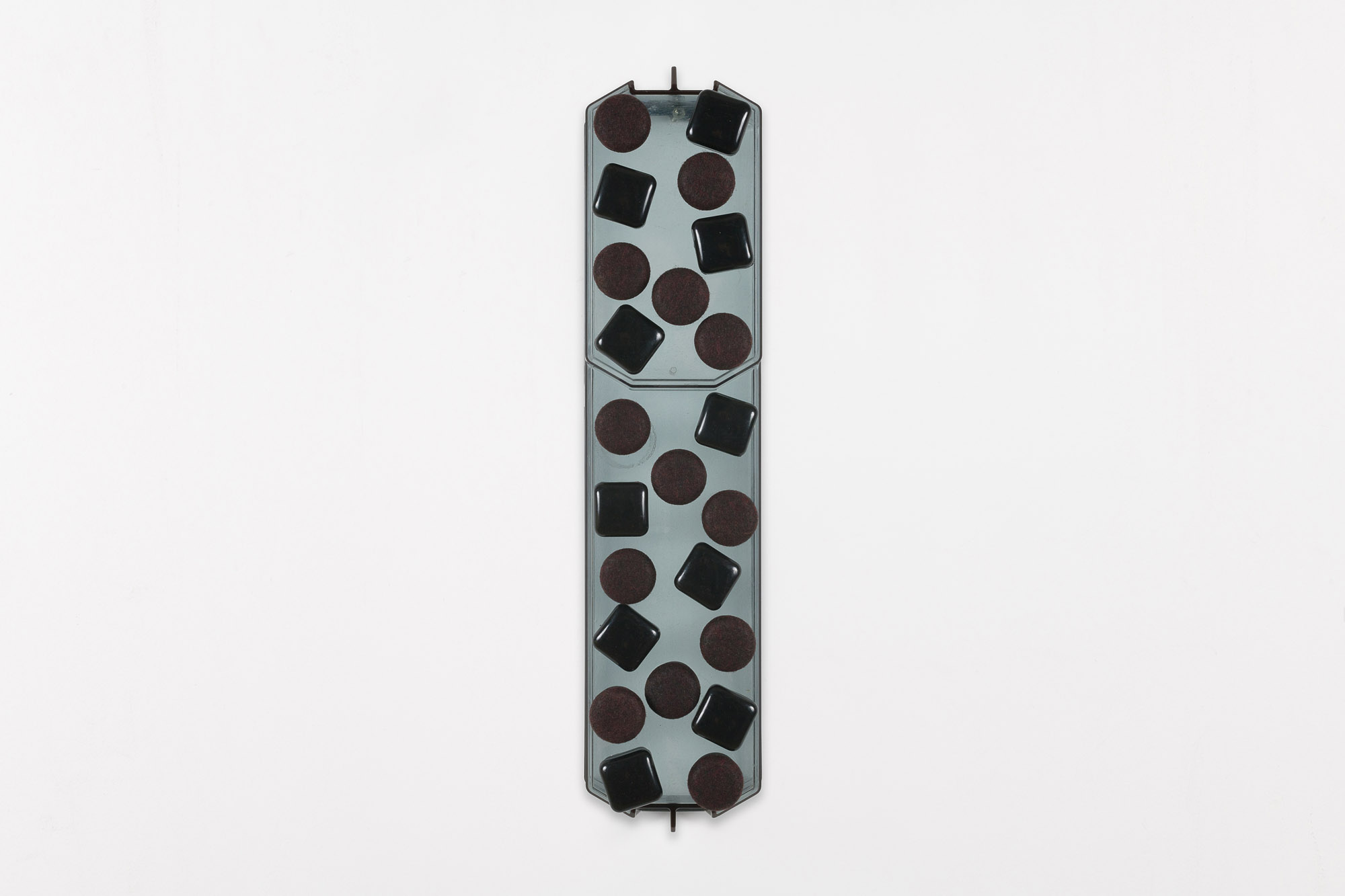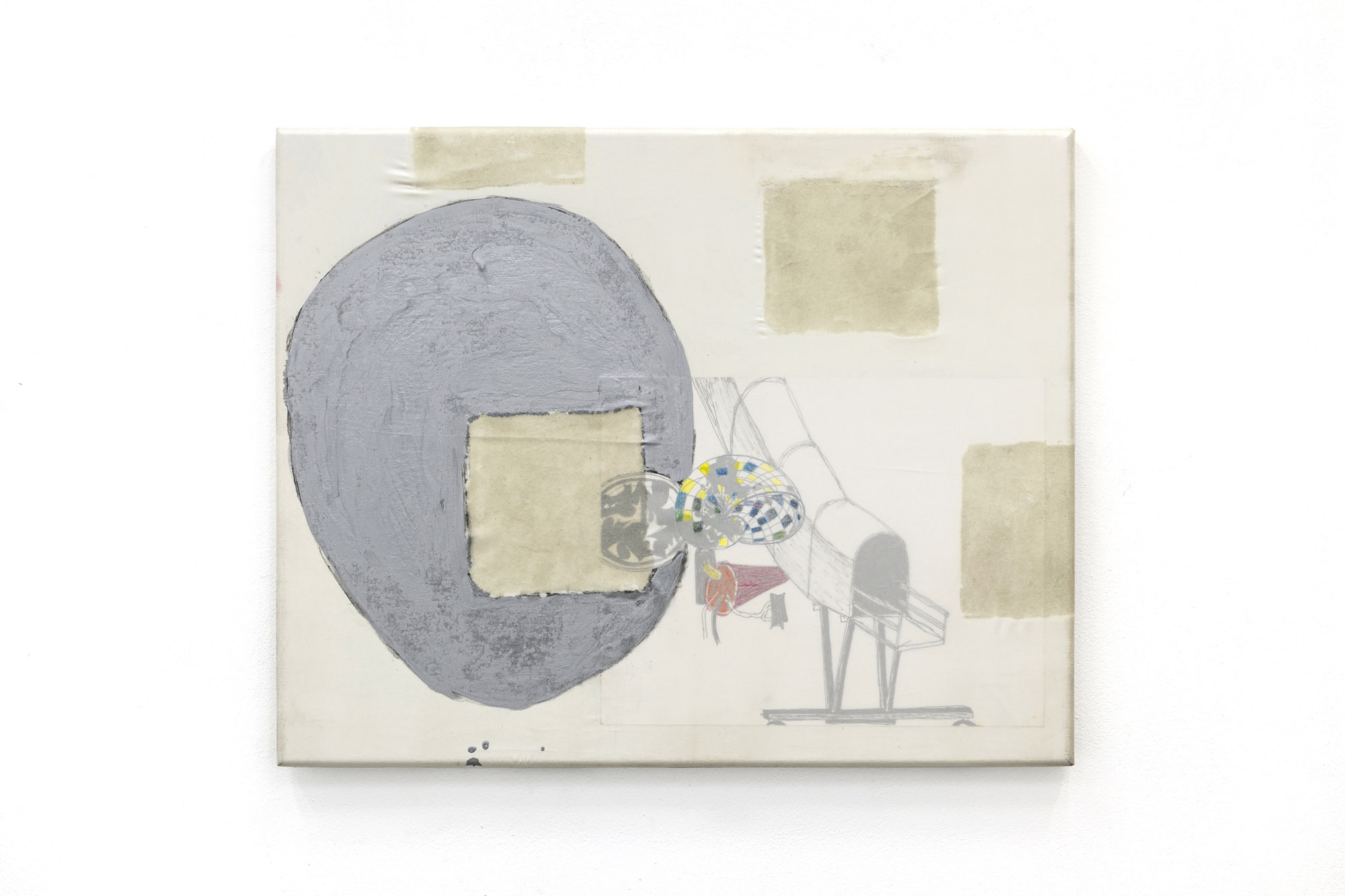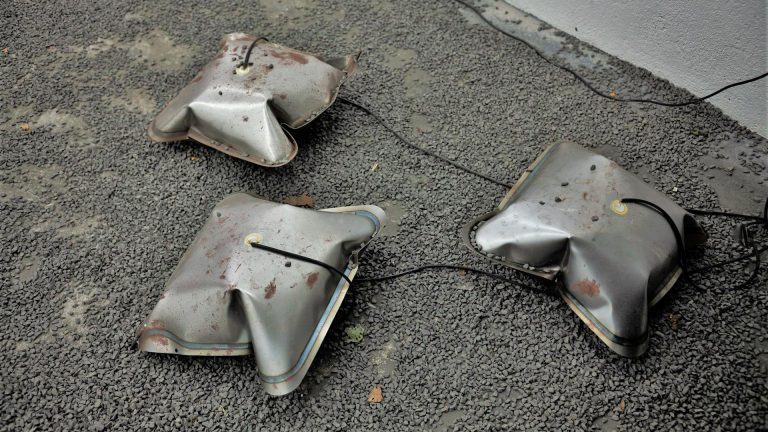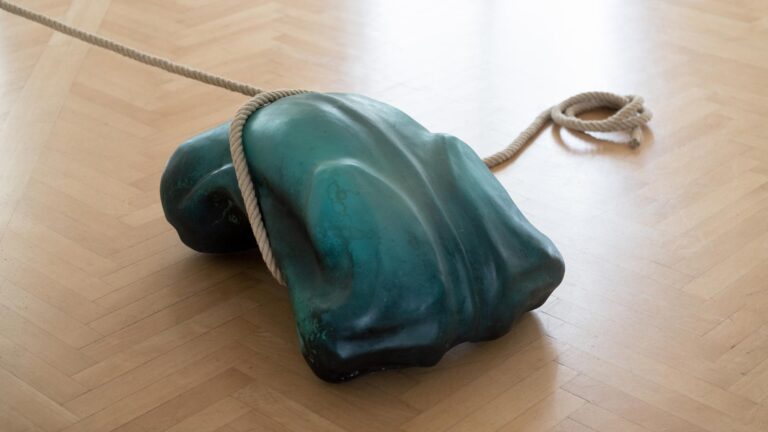Artist: Mitchell Kehe
Exhibition title: The difference between building and growth
Venue: 15 Orient at Weiss Falk, Basel, Switzerland
Date: February 10 – March 11, 2023
Photography: images copyright and courtesy of the artist and Weiss Falk, Basel
15 Orient is delighted to announce the opening of “The diference between building and growth”, a solo-exhibition by Mitchell Kehe hosted by Weiss Falk Basel. The exhibition represents Kehe’s third solo-show with 15 Orient and his first European solo-presentation.
What we individually omit from the past speaks as much about what the larger culture can hold and whether there’s space for that thing – an experience, a rupture. The recording of history and the construction and circulation of a collective memory, then is the organized output of this culture, like a current of formalized expectations; the river that runs alongside a path. If we jump in we’re taken somewhere outside our control. To omit something, then, is an attempt to stay on the path. In classical Freudian analysis, what gets “repressed” embodies resistance and opposition to the conscious incorporation of the most powerful dimensions of the individual. An analogy can be drawn with the way memory works and how the individual relates to the collective: mechanisms that exclude or repress the undesirable or things out-of-place within the social landscape are in both cases ideological. Repression is not isolated to the self, but is an illustration of a political landscape. Ellipses, gaps, cracks in our individual biographies that refuse entry into a set of acceptable, ofcial memories (those big events, those defning moments) reveal the historical present and its limitations.
In the case of exhibitions, we seldom take into account that the work of art, when publicly displayed, almost never stands alone. The relationship between works in an exhibition can never be fully or directly represented. The whole is greater than its individual parts. The whole (signifed by title, artist, oeuvre) functions in such a way that the structure is usually recovered from observable information, but the fact that these structures of meaning are not readily transparent and easily available is not necessarily a bad thing. I am thinking notably of genealogies that do not need to be named to be present such as clear art historical references or biographical elements. Clarity, clarifcation and information don’t need to be synonymous with representation. Yet, how can an artist, who stages a personal presentation of their work consciously move past these traps of representation without becoming too obscure, disconnected, silent or opaque? Transparency within the boundaries of consent can, however, happen when there is a narrower set of parameters, when the exhibition is informed by relationships between works, between ideas, as opposed to linear coordinates that map an artist’s life. Perhaps this form isn’t so uncommon, it sounds like an artist bio afterall, one in a more poetic or self-determined form , founded on the presence of a bridge that connects public and private life.
“The diference between building And growth” is artist Mitchell Kehe’s third solo exhibition at 15 Orient and first in the gallery’s temporary space at Weiss Falk in Basel. Here, the presentation of ostensible clarity is used to make a rhetorical and semantic statement. The title refers to a subtle nuance: that there is a sizable difference between two terms that most would consider interpretative. The title also might refer to accumulation. When does the thing that’s being built become a collection, a representation of growth. Can something grow not in increments but in snapshots? For this show, the artist has installed a series of new paintings (all from 2022-23) on stretched canvas and polyester – a signature for Kehe, who often explores the limits of transparency –alongside curious everyday objects teeming with strange protuberances. Beyond the rhetorical possibilities of the title and the artist’s interest in forms of concealment, something else is present in the works, and especially the paintings; an infiltration, and a rushing back-and-forth into an irreconcilable set of imperatives. What’s happening in the works and their display produces an additional reflection on the standards of exhibition-making. Exhibitions like artworks themselves, are subjects, and also conscious and unconscious ideological questions and programmes. Their unconscious, or less visible aspects, can be understood as manifestations of what they are allowed or not allowed to do, of social limitations and codes. What sends figures, shapes and colors through the mesh of a polyester canvas or creates a swarm of materials on a plastic surface, originates partially in Kehe’s own biography, something that is present but unspoken about, that is personal but also an expression of sudden confrontations with a familiar, yet unstable world. The visible compositions on the various surfaces of the artworks are responses to these long past, but not forgotten events which are now components – in a narrow sense – of a
larger narrative. The work is also an accumulation of parts and memories, which are inherently elusive and uncertain or up for interpretation and reinterpretation, by the artist and the audience. Whether we are younger or older, we are always and profoundly unprepared.
Throughout the gallery, ready-made sconces and wall fixtures stand both freely and belong to specific artworks. This decisive approach acknowledges the vitality and time-and-site-bound qualities that belong to the public display of artworks. This approach to exhibiting art also highlights a kind of extreme autonomy for Kehe that renders the gallery space somehow both moot and influential to what is on display. Kehe’s use of the space – referential and fragmented – speaks to the often awkward dance between showing and hiding. It’s a dance of freedom, but also potentially self-censorship, and potentially an act of protest. The exhibition, after all, is often a form of control, of narrativizing, and simplifcation in which the shock that comes with complexity or contradiction is managed away with the use of language or rhetoric devices. Artists can try and undo these restrictions by introducing forms of resistance and opposition: by making work out of dirt, dust, or trash, by reusing the architecture of temporary exhibits (that would otherwise be exchanged), or in the case of Kehe’s, by installing blinding lights next to paintings, effectively turning the gallery space into something other than an gallery space. How does gallery-turned corridor or waiting room newly disturb a web of references for viewing? Furthermore, Kehe’s use of language plays with the way rhetorical strategies are often deployed to both control and romanticize the possible meanings of a work.
Even when its presentation is undisciplined, Kehe’s work is also measured. There’s a vitality and improvisation to the work, but siphoned like petrol through a tube. The result is a rejection of the grand gesture in the place of the diminutive. The diminutive also seems out of place in a gallery, and expresses an ambivalence about presence, connection, and the pleasures that cluster around them. Ultimately, it is not about abstraction or reduction, nor about the difference between building or growth, but about division and abandonment. This can be seen in the way the works welcome forms of ambivalence where they do not currently exist, like paint that bleeds through both sides of a canvas. The works in the exhibition present unbelievable compositions in believable spaces with ready-made framing devices. Nevertheless, there’s an energy, even a passion to Kehe’s work that emerges insistently to exert a kind of pressure – albeit momentarily – on the pathway between biography and society, between a tolerable and unforgiving reality.
– Gianmaria Andreetta
Mitchell Kehe (b. 1984) lives and works in Berlin, DE. In 2016, he received a MFA from the Piet Zwart Institute in Rotterdam, NL. Kehe’s work has been featured in numerous recent solo and group exhibitions including; “Jahresgaben” (2022) at The Wig, DE, “Reassembly”(2021) at Galerie Nordenhake, SE, “Who’s the Best at Believing” (2021) and “All the World’s Organs” (2019) at 15 Orient, NY. In June of 2023, Kehe’s work will be the subject of a solo-exhibition at Edouard Montassut, FR.
Mitchell Kehe, The difference between building and growth, 2023, installation view, 15 Orient at Weiss Falk, Basel
Mitchell Kehe, The difference between building and growth, 2023, installation view, 15 Orient at Weiss Falk, Basel
Mitchell Kehe, The difference between building and growth, 2023, installation view, 15 Orient at Weiss Falk, Basel
Mitchell Kehe, Untitled 10, 2023, Oil, acrylic, pastel and enamel on fabric, 130 x 220 cm
Mitchell Kehe, Untitled 15, 2023, Plastic sconces, LED lights, cardboard, MDF, hardware, electricity, 293 x 25 x 25 cm
Mitchell Kehe, The difference between building and growth, 2023, installation view, 15 Orient at Weiss Falk, Basel
Mitchell Kehe, Untitled 8, 2023, Soft pastel, acrylic, and rubber/felt objects on polyester and canvas, 60 x 40 cm
Mitchell Kehe, Untitled 8, 2023, Soft pastel, acrylic, and rubber/felt objects on polyester and canvas, 60 x 40 cm
Mitchell Kehe, Untitled 5, 2023, Soft pastel, acrylic, charcoal on polyester and canvas, 40 x 60 cm
Mitchell Kehe, The difference between building and growth, 2023, installation view, 15 Orient at Weiss Falk, Basel
Mitchell Kehe, Untitled 9, 2023, Enamel, colored pencil, charcoal on polyester and canvas, 40 x 60 cm
Mitchell Kehe, The difference between building and growth, 2023, installation view, 15 Orient at Weiss Falk, Basel
Mitchell Kehe, Untitled 12, 2023, Soft pastel, rubber/felt objects on canvas, 74 x 112 cm
Mitchell Kehe, The difference between building and growth, 2023, installation view, 15 Orient at Weiss Falk, Basel
Mitchell Kehe, The difference between building and growth, 2023, installation view, 15 Orient at Weiss Falk, Basel
Mitchell Kehe, Untitled 3, 2023, Soft pastel, acrylic, charcoal, PVA on polyester and canvas, 60 x 40 cm
Mitchell Kehe, Untitled 6, 2023, Masking tape, acrylic, PVA on polyester and canvas, 30 x 60 cm
Mitchell Kehe, The difference between building and growth, 2023, installation view, 15 Orient at Weiss Falk, Basel
Mitchell Kehe, The difference between building and growth, 2023, installation view, 15 Orient at Weiss Falk, Basel
Mitchell Kehe, Untitled 1, 2023, Soft pastel, enamel, acrylic, charcoal, PVA on polyester and canvas, 90 x 60 cm
Mitchell Kehe, The difference between building and growth, 2023, installation view, 15 Orient at Weiss Falk, Basel
Mitchell Kehe, The difference between building and growth, 2023, installation view, 15 Orient at Weiss Falk, Basel
Mitchell Kehe, Untitled 7, 2023, Soft pastel, acrylic, PVA on polyester and canvas, 30 x 60 cm
Mitchell Kehe, The difference between building and growth, 2023, installation view, 15 Orient at Weiss Falk, Basel
Mitchell Kehe, The difference between building and growth, 2023, installation view, 15 Orient at Weiss Falk, Basel
Mitchell Kehe, Untitled 14, 2023, Felt and rubber on plastic, 50 x 20 x 20 cm
Mitchell Kehe, The diference between building and growth, 2022, Enamel, focking, color pencil, collage on polyester and canvas, 50 x 40 cm
Mitchell Kehe, The difference between building and growth, 2023, installation view, 15 Orient at Weiss Falk, Basel
Mitchell Kehe, Untitled 2, 2023, Soft pastel, acrylic, charcoal, PVA on polyester and canvas, 160 x 130 cm

